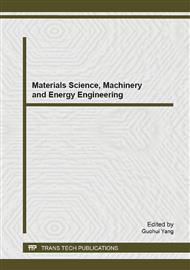p.389
p.395
p.403
p.409
p.413
p.421
p.428
p.435
p.441
Simulation of Generated Heat by Friction of Explosion-Proof Elevator Ropes
Abstract:
Explosion-proof elevator has been more and more widely used in the flammable, explosive places. Because of the particularity of the environment, in the design of explosion-proof elevator, various approaches are taken to achieve the purpose of explosion-proof, such as explosion isolation and intrinsically safe circuits. Besides, it is important to pay special attention to the collision and friction between various parts of the elevator. As well as elevators traction sheave and hoist ropes, over-speed governor sheave and ropes are also the main parts which generate thermal energy easily when there is friction happened. In this article, a finite element method (FEM) is used to simulate and analyze the thermal energy generated in those two parts with a purpose to test the performance of explosion-proof.
Info:
Periodical:
Pages:
413-420
Citation:
Online since:
December 2013
Authors:
Keywords:
Price:
Сopyright:
© 2014 Trans Tech Publications Ltd. All Rights Reserved
Share:
Citation:


